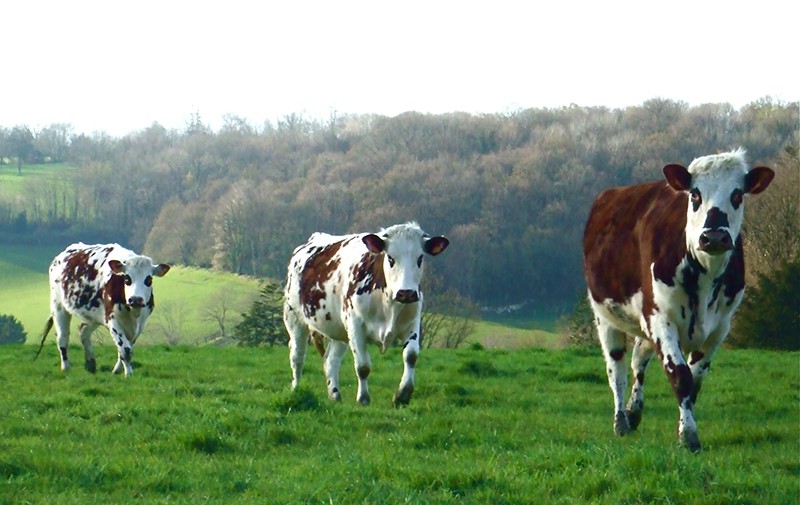
Milk
Rich, with a high butterfat content of 4 percent and protein of 3.6 percent.
Cheeses
Camembert de Normandie, Livarot, Pont-l’Évêque, and Brillat-Savarin
Colors
Distinctive raccoon-eye patches. Three characteristic coat colors, called the Three Bs: Blanc (white), Blond (fawn/red), and Brindled (brown). The arrangements of these colors offer great variety of coats: Blanc, or quail, coat is white with scattered patches of color; Blond coat has one big fawn patch covering almost the entire cow’s body, its belly remaining white; Brindled is similar, with a brown patch.
History
One of the cultural close calls of the Allied Invasion of Normandy was the near-total decimation of the Normande breed of cattle. The breed was brought to northeastern France by Viking conquerors of the 9th and 10th centuries. For more than a thousand years, these cattle supported the residents with a pair of products: meat and milk. The Normande’s meat is well known for its tenderness, flavor, and marbling. Now, due to its increased value, the meat is another source of income for the farmers.
In France
Normande is the third-most popular milk breed in France, after the Holstein and the Montbéliarde. Today, there are 3 million Normande grazing on French pastures, with large numbers in Normandy, Brittany, and Maine, as well as in the Ardennes and the Pyrenees.
Around the World
Normande have been established in Latin America for more than a hundred years in such places as Brazil, Colombia, Ecuador, Paraguay, Uruguay, and Venezuela. In Europe, the breed has done well, particularly in Belgium, Switzerland, Great Britain, and Ireland. They can also be found in the United States, Madagascar, Mexico, and soon Japan.




One thought on “Normande Cows”